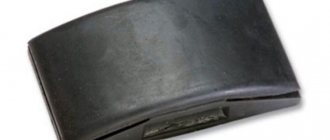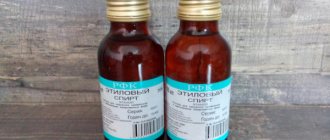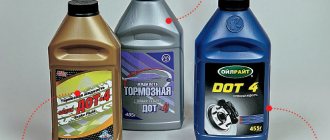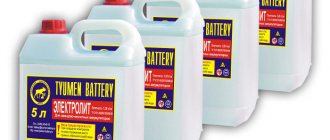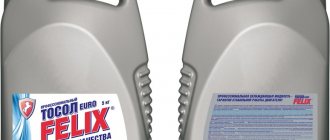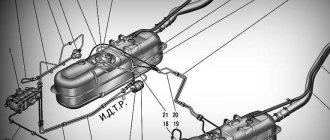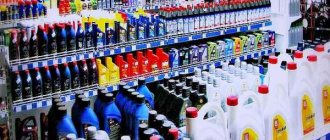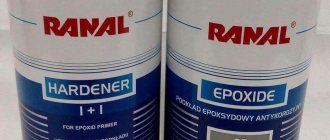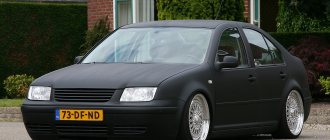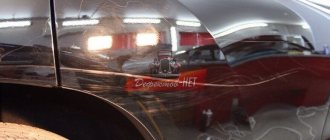In the summer, even ordinary water could be filled in the washer reservoir, but in cold weather it would certainly freeze. To avoid this, special liquids are poured into the tank, one of the properties of which is not to harden at sub-zero temperatures. People call them anti-freezes. The antifreeze contains alcohol, which protects against hardening. These liquids are constantly in demand by motorists if it is cold outside. The cost of antifreeze can sometimes be quite high. Many people wonder if it is possible to make these mixtures in the garage with your own hands. Let's try to figure out what these non-freezing liquids are.
What may be included in branded liquids?
In fact, the antifreeze composition for cars is not an innovative substance. Under this loud name, manufacturers of branded and expensive mixtures hide the most common alcohol and some additives. But not everything is as simple as it seems at first glance.
There are different types of alcohols, which is why the resulting product may have different technical characteristics that differ from standard liquids. But before considering alcohols, it is necessary to find out what is included in the antifreeze. In the composition of a factory-made antifreeze liquid you can usually see alcohol, surfactants, dyes and, of course, water. Some people add flavorings.
What does antifreeze consist of?
Alcohols
To prevent glass from freezing in winter, it is necessary to lower the crystallization temperature of water. The simplest aliphatic alcohols are rational substances for solving such a problem. 3 types of monohydric alcohols are used, both in mixture and mono:
- Ethanol
Not poisonous; crystallizes at -114 °C. It was used until 2006, but due to its high cost and frequent use internally in the form of surrogates, it was excluded from the composition.
- Isopropanol
Unlike ethanol, isopropyl alcohol is cheaper, but has a toxic effect and the smell of acetone.
- Methanol
It has the best physical and chemical properties. However, it is highly poisonous and is prohibited for use in a number of countries.
The content of technical alcohols in antifreeze varies from 25 to 75%. As the concentration increases, the freezing point of the mixture decreases. Thus, the anti-freeze composition down to -30°C below zero includes at least 50% isopropyl alcohol.
Detergents
The next function of antifreeze fluid is to remove dirt and stains. Anionic surfactants are used as detergent components, which act regardless of temperature. Surfactants also improve the mixing of poorly soluble components and alcohols with water. Percentage content - up to 1%.
Denatured alcohols
To combat the ingestion of cleaning fluids, special additives with an unpleasant odor are introduced. More often, pyridine, phthalic acid esters or regular kerosene are added. Such compounds have a repulsive aroma and are poorly separated in alcohol mixtures. The proportion of denaturing additives is 0.1–0.5%.
Stabilizers
In order to maintain performance properties, toxic ethylene glycol or harmless propylene glycol is added to the antifreeze. Such compounds increase the solubility of organic components, extend the service life, and also maintain the fluidity of the liquid. Content - less than 5%.
Flavors
To eliminate the “acetone” aroma, isopropanol-based windshield washers use fragrances - aromatic substances with a pleasant smell. The component share is about 0.5%.
Dyes
The coloring serves a decorative function and also indicates the percentage of alcohol. Antifreezes are usually found with a bluish tint, which corresponds to a 25% concentration of isopropanol. Excess dye leads to the formation of sediment. Therefore, its content should not exceed 0.001%.
Water
Deionized water without any impurities is used. The water distillate acts as a coolant, solvent, and also removes contaminants along with surfactants. The percentage of water is 20–70% depending on the alcohol content.
About alcohols
Technologies that are widely used in the production of antifreeze automotive fluids involve the use of alcohols.
These can be different types of substances:
- Ethyl alcohol is the safest option for the driver and passengers. But products based on such alcohols are too expensive on the auto chemical market.
- Along with ethyl, methyl is widely used. It is poisonous and has no pronounced odor. It is also prohibited to use it for the manufacture of anti-freeze, but the cost is much cheaper than ethyl. If such alcohol is included in the antifreeze, then we can assume that it is a fake liquid produced by small companies.
- Isopropyl alcohol is also used. It has a rather pungent smell. Its price is very low. It is this, and not methyl alcohol, that is the basis for the production of affordable counterfeit products.
How to properly fill in anti-freeze?
When filling the glass washer container with anti-freeze, it is worth considering a number of tips:
- There is no need to pump out all the water - just select at least 50 percent of the volume. If the antifreeze is of high quality, the liquid will not freeze;
- It is not recommended to pour the composition right up to the neck;
- After filling the system, be sure to bleed it. This is done to expel ordinary water from the hoses, which is not capable of maintaining high temperatures. It is not difficult to understand that the liquid has dispersed throughout the system - this is noticeable by the appearance of a characteristic odor. If there is no such aroma, press the washer lever for 30-35 seconds. This time, as a rule, is enough to fill the system with an antifreeze composition.
Other components
Recipes for factory-made antifreeze liquids necessarily contain surfactants. They are designed to remove dirt, soot, grime, oil and anything else that may limit visibility from the glass surface.
For a liquid to be effective in cleaning glass, very few surfactants are required. Flavorings are also used in the production process. They serve to give the product a pleasant smell. Manufacturers often use the scent of apples, citrus fruits or any other product with a persistent and “tasty” aroma. Dyes color liquids in different colors. This makes it easier for the buyer to identify the desired product. Separately, it is necessary to say about water. For the manufacture of the highest class products, distilled is best suited. In some cases, it is possible to use artesian water with a minimum of salts. But the most ordinary one (from the tap) is not suitable for making anti-freeze.
Basic criteria and properties of washer fluid
Windshield washer fluid, first of all, must wash well and have excellent cleaning properties. Good resistance to freezing is an important indicator.
Compatible with rubber and painted surfaces, and safe for plastic, of which there is a lot in the car. And the key point is that the washer fluid must be compatible with polycarbonate glass. Such glasses have good optical transparency, but the material is very capricious to various types of compositions.
Polycarbonate is used in the assembly of modern headlights: xenon and LED optics; they allow for less dispersion than conventional ones. Therefore, when purchasing another liquid, choose one that is compatible with this kind of material.
The resistance of the composition to the formation of scale and other solid deposits will prevent the formation of clogging of spray nozzles.
Also, the liquid must have a high level of safety, and when mixed with other products, it must not precipitate, causing flakes to form.
The smell should not be pungent, and the viscosity should meet the requirements in order to pump well through the system.
What happens if you skimp on windshield wipers by using regular water or a washer with a simplified formula: insufficient amount of detergent additives, incorrect alcohol composition.
The first thing that manifests itself is rapid wear of the brushes, abrasive wear of the glass, because abrasive particles are not washed off from the wipers, and therefore the effect of sandpaper is obtained.
Hard water has the effect of clogging the nozzles.
Composition of a good antifreeze liquid.
Many people think that the composition of the washer is alcohol and water. But this is far from true. A good antifreeze liquid consists of active substances that clean the glass surface. These are special surfactants that provide better wetting ability of the liquid; there is also a complex forming agent for the stability of the composition, so that there is no separation and precipitation of components during storage or temperature fluctuations
The fragrance is glycol, which gives great benefits.
More information about antifreeze liquids
Modern technologies for the production of antifreeze substances provide for the sale of two types of products in retail chains. This can be a concentrate or a ready-made liquid designed for specific fixed temperatures. In the first option, the concentrate is diluted by the driver with water according to the instructions and in accordance with the outside temperature. And only after this the mixture enters the tank.
In the second case, a completely ready-to-use liquid is offered. It is most often designed for certain conditions - for example, down to -15 degrees. So, if the temperature is lower, the mixture will freeze. Therefore, you need to select the liquid with special care.
production of antifreeze liquid
...dishwashing detergents are already free creativity, high precision is not necessary.
...dishwashing detergents are already free creativity, high precision is not necessary.
Dilute water with alcohol according to the table below. Since we want to get a freezing point below -27°C, we take 2 liters of alcohol for 3 liters of water. Next, pour in the blue and a few drops of dishwashing detergent (they also contain water), and sprinkle cologne (a bit of alcohol) into the jar. Mix.
Ethyl alcohol based solution: suitable for the harshest conditions
Ethanol is the most expensive of the alcohols. It withstands crystallization very well. If the alcohol is pure, it can retain its original state down to temperatures of -114 degrees. So, to get an effective anti-freeze, the composition in percentage is as follows. You need to pour 30% ethanol into a suitable container. The rest of the volume is occupied by distilled water. It helps clean the windshield better.
Then add one or two drops of car shampoo, and, if necessary, fragrance. The liquid obtained according to this recipe can work down to -20 degrees. If you adjust the amount of ethanol, it is also possible to mix formulations that are less resistant to cold.
Other methods of preparing non-freeze
Especially desperate car owners mix 9 parts water and 1 part methanol, adding a little washing powder. However, already at the stage of preparing such an antifreeze, you should not inhale its vapors and it is important to protect your eyes and skin.
It is better to use safer methods of preparing cleaning liquid using components that can be found in any home:
- Vinegar. This remedy is the easiest to prepare. To do this, mix 9 percent table vinegar with clean water in equal quantities. After this, all that remains is to add 30 ml of dishwashing detergent and shake the anti-freeze thoroughly. It will be effective at temperatures not lower than -15 degrees.
- Ammonia. Our grandmothers also used ammonia to clean windows and other glass surfaces. To prepare windshield washing liquid, you will need 1 part ammonia and 3 parts distilled water. You need to pour in the ammonia very slowly (preferably along the wall of the container) so that foam does not appear. The finished composition can be used at temperatures down to -10.
We use vodka to make anti-freeze
Purified vodka of average price and quality turns into a solid state at temperatures of approximately -25 degrees. This means you can simply pour it into the tank and enjoy a good view. If you slightly adjust the composition of the anti-freeze for cars and the proportions of the main components, you can get a liquid that can withstand a maximum of 10 degrees below zero. For 40% vodka you need 60% distilled water.
Also add a little detergent or car shampoo. Experienced car enthusiasts recommend replacing water with summer concentrate. Then there is no longer any need to add cleaning agents to the solution. This method was successfully used back in the Soviet years, and its effectiveness has been proven by more than one generation of drivers.
If the windshield washer fluid is frozen in the reservoir
It happens that you filled in the winter washer late or got the left one, which was heavily diluted with water. Then it will freeze in the tank, injectors and pipes. It will be impossible to clean the car window from dirt. You'll have to manually wipe the glass the old fashioned way. But there are ways to defrost and fill in the correct washer fluid.
- The best thing is to drive the car into a warm parking lot and wait 3-4 hours while the car warms up. Plus, a bad washer will defrost faster if there is heat coming from the engine (even when it is stopped, but warm). You can find underground or covered parking near the shopping center. Or visit a warm winter car wash - you’ll wash your car and warm it up from freezing.
- Remove the windshield wiper reservoir. On many machines it is mounted with 2 bolts and can be removed in 2 minutes. Next we take it home. Don’t forget about the windshield wiper nozzles; they also need to be removed and warmed up.
- If water splashes in the reservoir, try punching a hole in the windshield wiper jets with a thin needle. Water could freeze in them.
- It’s even easier to fill the tank with warm water. It will quickly dissolve the ice. A slower way is to pour in alcohol, which melts ice very well or special auto chemicals. Only then be sure to fill in the correct anti-freeze.
Remember. If the winter washer is frozen and water does not come out of the windshield wiper jets, then do not torture the pump. Do not try to constantly turn on the glass cleaner - this will quickly burn the motor in the tank.
Inexpensive, but the most dangerous recipe
This composition will be based on isopropyl alcohol. It is not prohibited to use it. But experienced car owners do not recommend this alcohol. The problem is that it has a very aggressive effect on the tires and paintwork of the car. Also, do not forget that this type of alcohol is part of the solvent. How to make a very effective, but also very aggressive antifreeze fluid in a garage environment? It's simple - 20% of the container is filled with isopropanol. The remaining 80% is water. If necessary, you can add flavorings to the antifreeze composition.
This mixture can easily withstand temperatures down to -10 degrees. If desired, detergents are added to the solution. Compared to the previous recipe, which uses vodka, you can get the same effectiveness at minimal cost.
production of antifreeze liquid
Pour 2 liters from a jar of water.
For accuracy, we use a measuring container. Pour 2 liters from a jar of water. For accuracy, we use a measuring container.
Alcohol and other ingredients can be bought absolutely legally, and we will mix the solution for ourselves, and not for sale. Nothing illegal. The standard volume is 5 liters. We reject methanol right away - there are no people willing to check the words of the country’s former chief sanitary doctor Gennady Onishchenko that at high concentrations its vapors can cause blindness. What remains is isopropanol and ethanol. We take the latter: it is less viscous, more fluid, and if the experiment fails, we will find a use for the remains. Only wipe the contacts with isopropanol.
Should you make your own mixtures?
Some car owners will think - why make these fluids yourself, because now everything can be bought? Is it profitable? It used to be really profitable. Five liters of liquid cost 200-250 rubles. But now you can find inexpensive anti-freeze products on sale, the cost of which is rarely more than 100 rubles per 5 liters. Ethyl alcohol is not easy to get, and vodka has risen in price significantly. It turns out that for 5 liters you will need to pay up to 400 rubles. Components such as isopropyl alcohol or methyl alcohol are very cheap, but it is not easy for an ordinary person to purchase them. So, even knowing the composition of the antifreeze, the proportions of the components, it is better and cheaper to buy available ready-made mixtures.
The best anti-freeze concentrates for car windows and headlights
Antifrost Scheiben-Frostschutz (-70°C) from Liqui Moly
Winter concentrate for glass and headlight washer, which is made on the basis of special German-made components and is highly effective. Clears the front windshield of salt, dirt, snow and ice, leaving no marks or streaks after the brushes pass.
Sold in a 1-liter canister and used only in diluted form according to the application table.
+ Copes well with cleaning windshields and car headlights;
+ Ensures smooth movement of the windshield wiper blades;
+ Prevents clouding of headlight glasses;
+ Has a pleasant smell.
- High price.
Anti Ice Concentrate (-80°C) from Lavr
The best concentrate in terms of pour point. Made from isopropanol. Supplied in a 1-liter transparent plastic canister.
+ Does not leave streaks;
+ Effective in removing snow, frost, dirt and reagents;
+ Has a mild effect, being safe for paintwork, the structure of sealing parts made of rubber and plastic surfaces.
Hi-Gear (-50°C)
Windshield and headlight washer concentrate with high cleaning and anti-icing properties. Supplied in a 1-liter canister with a convenient watering can lid.
It does a good job of removing the oil film formed on the windshield due to anti-icing agents. Provides soft operation of windshield wiper blades, protecting rubber parts from abrasive wear.
+ Good cleaning properties;
+ Convenient packaging.
— The smell of the finished product is not very pleasant.
Quality brands of washer fluid
If you need a ready-made anti-freeze liquid for your car, you should pay attention to the following:
- "Effect Plus". The product is domestically produced and retains its properties even at minus 30. It contains isopropyl and water.
- "Hi clear." Imported, expensive liquid. Suitable even at minus 25 degrees, it is used sparingly.
- "Clean mile" Another domestic product that has proven itself to be excellent. The smell is weak.
- "Pringo" It is stated that the product is intended for temperatures down to minus 20 degrees. But it is able to retain its properties even in extreme cold.
The listed liquids are often counterfeited, so you need to be more careful when purchasing.
We recommend reading about the fine for LED headlights. From the article you will learn about what types of headlight bulbs can be installed, acceptable options for using LED headlights, and the fine for violating the installation. And here is more information about how to choose license plates for a car.
Anti-freeze for cars is an item with which sellers often cheat. In order not to run into low-quality liquid, it is better to buy it in the cold season and in a specialized store. Or cook it yourself, but try it first without going far from home.
Anti-freeze composition according to GOST
Currently in Russia there are no regulated documents on the composition and production of windshield washer fluids. However, individual components are subject to regulatory requirements based on safety and effectiveness. Approximate composition of winter windshield washer fluid with the PCT mark of conformity according to the interstate standard (GOST):
- Dimineralized water: not less than 30%;
- isopropanol: more than 30%;
- Surfactant: up to 5%;
- stabilizer propylene glycol: 5%;
- water-dirt-repellent component: 1%;
- buffering agent: 1%;
- flavorings: 5%;
- dyes: 5%.
Product certification takes into account the degree of toxicity and performance of the product. Thus, windshield washers must effectively cope with winter contaminants and not form streaks or spots that limit the driver’s visibility. The components in the composition must be indifferent to fiberglass and metal surfaces.
In summer, the car windshield can be washed with water. In winter, the driver should see the road just as well, but this is only possible with the use of a non-freezing agent to remove dust and dirt. After all, in the cold season, the glass not only gets dirty, but due to the difference in temperature inside the car and outside, it becomes covered with a crust of ice.
The special composition of anti-freeze for cars will rid it of dirt, stains on the surface and prevent the appearance of frosty patterns.
There are three types of ready-made glass cleaning products in winter:
- Based on methyl alcohol. These are semi-legal liquids that are generally prohibited for use in Russia. But they can be bought cheaply, and they cope well in mud and ice.
- You just need to take into account that methanol is harmful to health, even if the motorist does not intend to drink such anti-freeze. It is not advisable to inhale the vapors of the substance, as this can lead to nausea and dizziness.
- Based on ethyl alcohol. These are high-quality, but very expensive windshield washer fluids. Ethanol does not harm health when used for its intended purpose, it removes dirt well, and protects the surface from the formation of an ice layer. But it is not always possible to buy such anti-freeze, since due to the high cost, the products are not very common.
- Based on isopropyl alcohol. These are the most used glass fluids. They are inexpensive and do their job well. But they also have disadvantages: isopropyl has a strong smell and in severe frost increases the viscosity of the product. The latter makes it unusable. In order for an isopropyl-based antifreeze to work at low temperatures, it must contain a high concentration of the substance. This means the smell will become even more pungent.
Expert opinion
Nadezhda Smirnova
Automotive Law Expert
The higher the temperature the product is designed for, the less it smells. Therefore, those who do not live in the far north should take a liquid that retains its properties at minus 20-25 degrees.
There are no standards for liquid intended to be poured into the washer. Therefore, do-it-yourself anti-freeze for cars is quite accessible to everyone, especially since the ingredients can be bought.
There are several recipes for preparing windshield washer:
- Based on window cleaning liquid. But not every commercially available product is suitable; you need to choose a product containing alcohol. The composition of anti-freeze for cars and the proportions of the components are as follows: 33% window cleaning liquid, the rest is distilled water.
- Based on medical alcohol. A substance with a strength of 95 or 70 degrees is suitable. But the proportions depend on this indicator. If the alcohol is 95 degrees, you need 650 g; for a 70-degree antiseptic, take 750 g. In each case, measure out 3 liters of water. After mixing it with alcohol, add another 1 tbsp. washing powder and shake everything up.
- Vinegar based. In order not to spend a long time looking for what anti-freeze for cars is made from, take this affordable product and mix it with water in a 1:1 ratio. The recipe is best used at a temperature outside the window of at least minus 10 degrees. Only in this case will the smell become weaker.
- Ammonia based. For 2 liters of water take 1 liter of substance. They are mixed using a spoon or twig to prevent the formation of foam. Do not shake the container. To make the product work in severe frost, add 100-150 g of vinegar to it. This liquid is very effective, but has a pungent odor, so not every motorist can use the recipe.
Expert opinion
Nadezhda Smirnova
Automotive Law Expert
The proposed methods for preparing antifreeze have been tested more than once. But still, you shouldn’t cook a large amount at once. It’s better to do a little to check whether there will be any streaks on the glass after using it, and whether the driver can tolerate the smell of the product. In all cases, you should take bottled water rather than tap water, unless the recipe calls for distilled water.
Sensitive people should not use a strong-smelling product to clean glass. Otherwise, they will experience discomfort and headaches, and this is dangerous while driving. You need an odorless anti-freeze for your car, this can also be prepared at home.
Dishwashing liquid is used as a base. High-quality products contain a minimum of fragrances and do not contain substances that negatively affect health. An important quality of the base is its immunity to low temperatures, which is easily verified.
Concentrated liquid “Fairy” is suitable for preparing anti-freeze. You need to measure 1.5 tbsp. and stir in 5 liters of water. If you intend to use another dishwashing detergent, the proportions must be determined experimentally.
Ethanol-based anti-freezes and window cleaning liquids also have a fairly neutral odor. And if you need the product for a short time, and there is no time to bother with preparation, you can mix vodka with water. The smell dissipates quickly, and in mild cold the product works well.
Best before date
Many people buy washer fluid for future use. But the shelf life of antifreeze for cars is limited. It depends on the composition and storage conditions. On average, this is 2-3 years from the date of manufacture. But you need to take into account that in heat, alcohol, for example, can evaporate, and the effectiveness of the liquid will decrease. This is more likely if the container has been opened and the lid is not screwed on tightly.
Before the new season of using the anti-freeze left over from last year, it is better to test it. Only then should the washer reservoir be filled. A spoiled product may be indicated by a change in consistency, color or smell.
How to make a winter glass cleaner?
Anti-freeze in the washer can be made independently. To obtain 3 liters of composition (about -25°C), you will need the following components:
- Isopropanol (96%) – 250 ml;
- Water – 3 l;
- Washing powder – 1 tablespoon.
The powder must first be dissolved in a glass of water. The liquid should then be filtered.
A self-prepared antifreeze for a car will have good cleaning properties, but will have an unpleasant odor.
